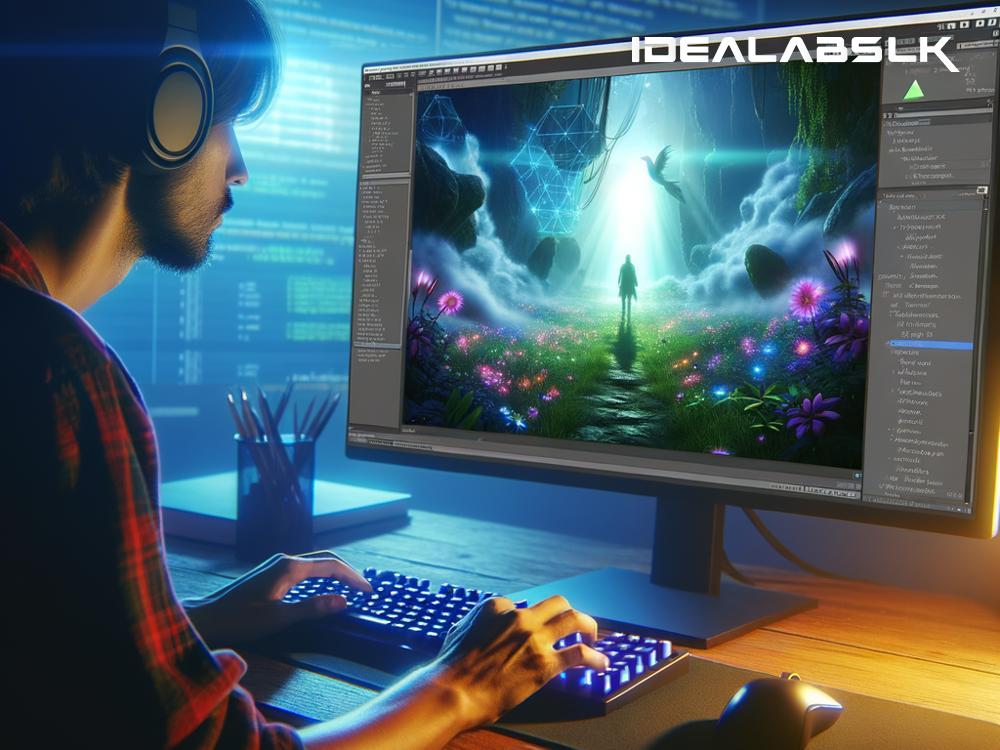How Game Engines Power Up Real-Time Rendering
In the world of video games and interactive media, making everything look lifelike and dynamic is a huge part of the magic. This is where the concept of "real-time rendering" steps into the spotlight. It's like having an artist who quickly draws or paints the scenery, characters, and special effects instantly as you move through a game world. But, who or what is behind this swift artistry? Enter the game engines - the unsung heroes enhancing real-time rendering and making our virtual experiences amazingly immersive.
Understanding Game Engines
Imagine a game engine as a massive toolbox filled with tools and machinery designed to build and operate video games. These engines are the software frameworks used by developers to craft the visuals, physics, sounds, and interactions of video games. Popular engines like Unreal Engine and Unity are like the Swiss Army knives for game development, offering a wide array of capabilities. They manage the heavy-lifting part of rendering, which is displaying the graphics on your screen as quickly and efficiently as possible.
The Magic of Real-Time Rendering
To appreciate how game engines enhance real-time rendering, let's first grasp what real-time rendering is. In simple terms, it's the process of generating images at a very fast pace, so fast that it seems instantaneous to the human eye. This is crucial in video games and simulations where the environment and scenarios can change in a split second, based on player’s actions or other factors. The goal is to create a seamless and highly responsive visual experience that feels as close to real life as possible.
Game Engines at Work: Enhancing Real-Time Rendering
1. Optimized Performance
Game engines are built to optimize rendering performance. They use clever tricks and algorithms to decide which parts of a game's world need the most detail at any given moment, and which can be rendered with less detail. This smart resource management allows games to run smoothly, maintaining the illusion of a living, breathing world without overwhelming your computer or console.
2. Stunning Visuals and Effects
Thanks to advanced lighting, shading, and texture mapping techniques, game engines can produce stunningly realistic visuals. They can simulate complex natural phenomena like water flow, smoke, or the way light bounces off surfaces. This level of detail and realism enhances the immersive experience, making you feel like you're truly part of the game's environment.
3. Consistent Updates and Community Support
Game engines, especially the popular ones, are continuously updated to incorporate the latest advancements in real-time rendering. Furthermore, they are supported by vast communities of developers and artists who contribute tools, plugins, and tutorials. This ecosystem ensures that game engines remain at the cutting edge of technology, continually enhancing their capacity to deliver breathtaking real-time visuals.
4. Accessibility and Flexibility
Modern game engines have democratized the game development process. They made real-time rendering technologies accessible to indie developers and students, not just big studios. With user-friendly interfaces and extensive documentation, these engines lower the barrier to entry for creating visually impressive games. Moreover, they are flexible enough to cater to various projects, from mobile games to virtual reality experiences, ensuring that developers can push the boundaries of real-time rendering across platforms.
The Future of Real-Time Rendering with Game Engines
As technology progresses, the line between real-time rendered graphics and pre-rendered graphics (graphics rendered ahead of time, like those in movies) continues to blur. Techniques like ray tracing, which simulates the way light interacts with objects to create incredibly realistic lighting effects, are becoming more prevalent in real-time rendering, thanks to the capabilities of modern game engines.
The future of real-time rendering looks promising, with game engines leading the charge towards ever more lifelike, interactive, and immersive virtual worlds. As these engines evolve, they not only enhance the visual spectacle of games but also expand the creative possibilities for developers and artists.
Wrapping Up
Game engines are the backbone of real-time rendering, providing the tools and technologies to create immersive and dynamic visual experiences. They balance performance and quality, bring stunning visuals to life, and foster innovation through community support and updates. As we look forward, the advancements in game engines will continue to revolutionize how we experience and interact with virtual worlds. Indeed, the magic of real-time rendering is in good hands, thanks to the power and versatility of game engines.

